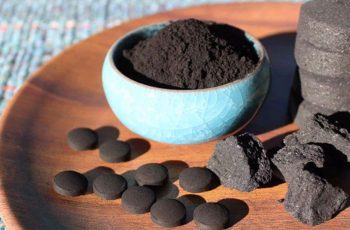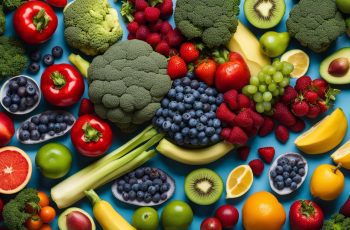Amino acids are essential for a wide range of bodily processes. Foods high in amino acids are therefore essential to your well-being. There are numerous advantages to consuming amino acids. As an example, it aids in protein and energy synthesis, metabolism, muscle growth, repair, and weight management, as well as brain health and weight loss. Almost all of your bodily functions are controlled by them. Amino acids are made in the body. Others, on the other hand, can be obtained by eating foods high in amino acids.
Proteins and enzymes that perform biochemical reactions are made from amino acids. Other vital biochemicals such as hormones and neurotransmitters are synthesized in the body using amino acids. Despite the fact that your body utilizes a wide variety of amino acids, you only need to consume nine of these in your diet. To get them, you’ll need to eat a diet rich in them. Athletes and those with cardiovascular or metabolic conditions also need to include essential amino acids in their diet.
The building blocks of life are proteins and amino acids. Amino acids are the byproducts of protein breakdown. Every cell has these amino acids, including muscles, bones, nerve cells, skin, and more.
Some essential amino acids that your body does not produce are:
- Lysine methionine
- Leucine
- Phenylalanine
- Tryptophan
- Valine
- Threonine
- Isoleucine
- Histidine
Several high-protein foods contain these essential amino acids. Examples include fruits, green leafy vegetables, seafood, and legumes.
Foods High in Amino Acids
A few amino acids are not synthesized by the body. In order to get enough amino acids, we need to eat foods high in amino acid content. Foods high in amino acids can be found in abundance. Proteins derived from animals and plants, for example, contain all of the essential amino acids your body requires. As a result, getting enough protein in your diet is an important part of getting enough of all nine essential amino acids. Because protein breaks down into amino acids, this is the scientific explanation.
1. Chia Seeds
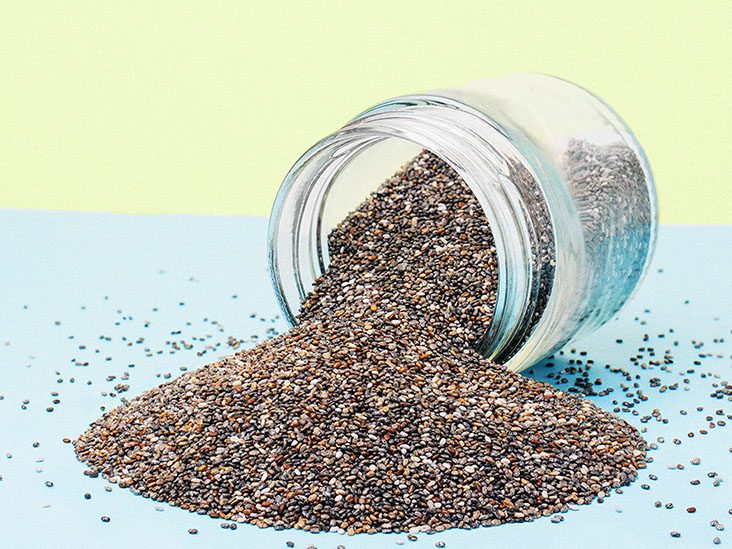
Chia seeds are a good source of plant-based protein and omega-3 fatty acids, which are essential for health. They are a protein powerhouse, containing all nine of the body’s insufficiently synthesized essential amino acids. When they’re part of a healthy diet, they help ward off a slew of long-term ailments.
2. Yoghurt
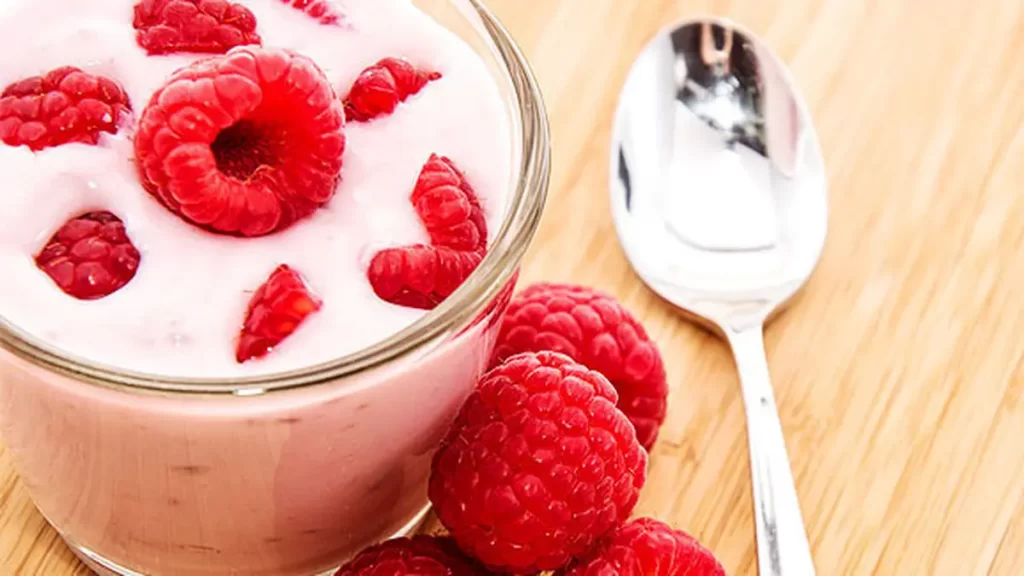
Milk and yogurt share many of the same nutrients. It’s an excellent source of amino acids, and it keeps you feeling full for a long time. Men get 30% of their protein from it, while women get 37% of their protein from it.
3. Milk
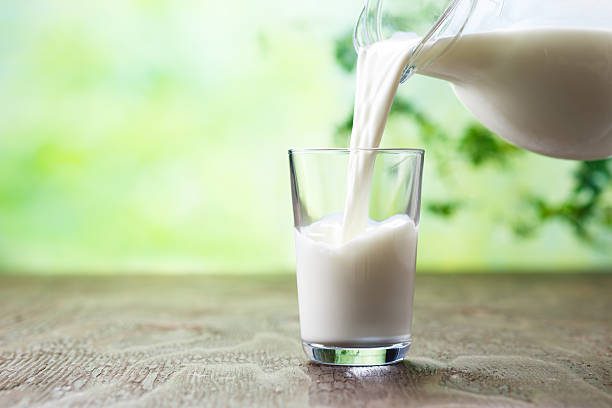
The protein content of milk is quite high. It contains adequate amounts of all nine of the amino acids that are required for life. Furthermore, it has a low calorie and carbohydrate density. It’s easy to incorporate into any diet, and you can use it in a variety of exciting recipes to do so.
4. Turkey

Tryptophan, a B vitamin-producing amino acid, is abundant in Turkey. It is necessary for a healthy digestive system, skin, and nervous system. Serotonin production is also greatly affected by it, as it plays a major role in the formation of the hormone.
5. Vegetables

Methionine, valine, threonine, histidine, and tryptophan are some of the amino acids found in most vegetables. Celery, cauliflower, and mushrooms are the most abundant sources of these amino acids in the human diet, followed by soy products. In addition, phenylalanine, found in vegetables, aids in the synthesis of thyroid hormones. The result is a wide range of metabolic activities in your body, such as heartbeat regulation, blood glucose management, weight loss and gain, bone health, and more. Vegetables contain histidine, which aids the body’s detoxification process. Toxic buildup can lead to conditions such as fatigue, depression, and more.
6. Nuts
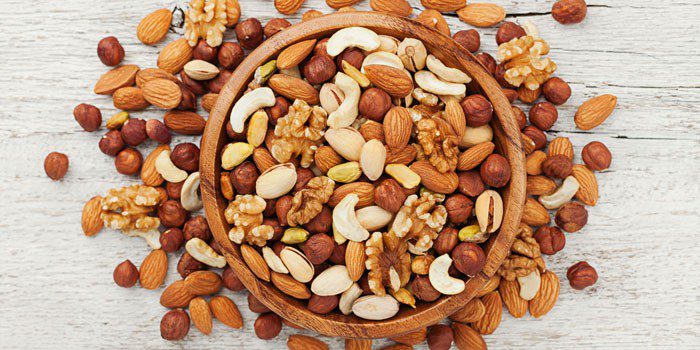
It is an amino acid called lysine that regulates calcium levels in the body. Bone health is dependent on calcium. In addition, it plays a critical role in a variety of bodily functions, including muscle contraction, nerve transmission, blood clotting prevention, and more. Lysine is abundant in nuts like almonds, cashews, and peanuts.
7. Fruits
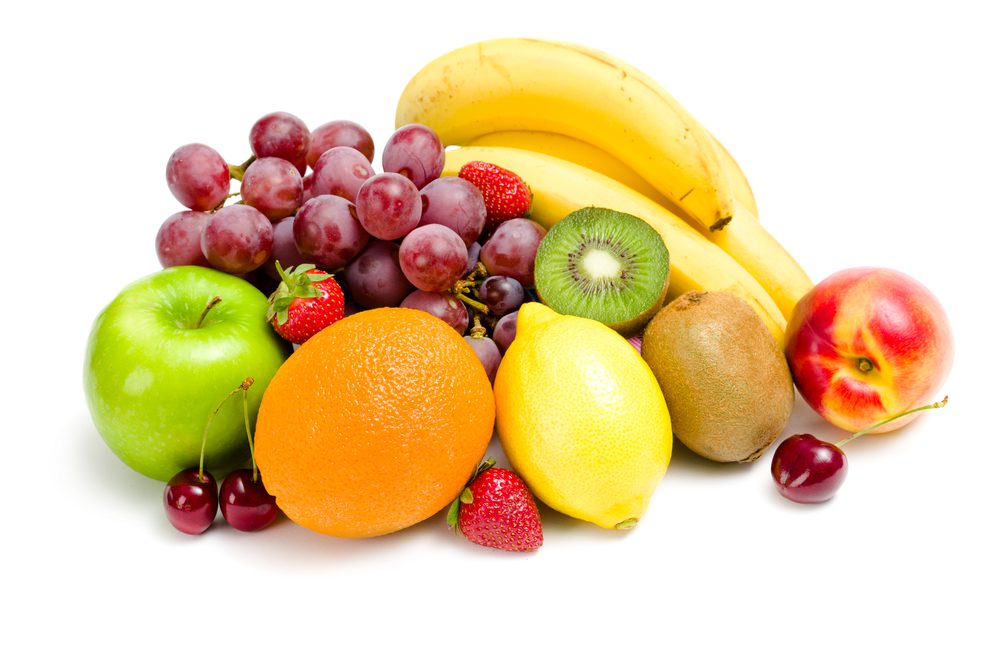
L-leucine, which is abundant in fruits, aids in insulin regulation. It also regulates your body’s glucose levels. A good source of amino acids can be found in fruits such as bananas and apples. Amino acids are abundant in apples, which have around 16 of them. Peel and pulp may have different levels of amino acids. The pulp, for example, has more amino acids than the peels.
8. Soybean
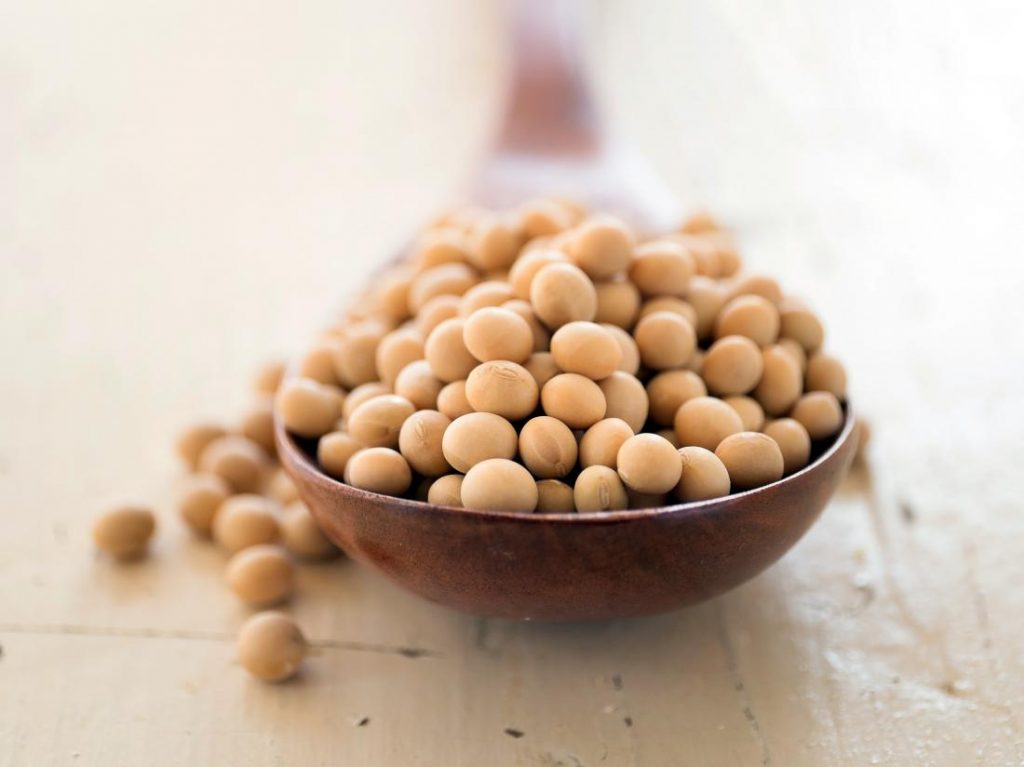
Protein and essential amino acids are abundant in this food. Soybean isoleucine, for example, aids in the synthesis of hemoglobin. Growth and weight gain are also aided by the stimulatory effect of growth hormones. Soybean may also benefit a child’s overall health and development.
9. Beans, Legumes, and Whole Grain
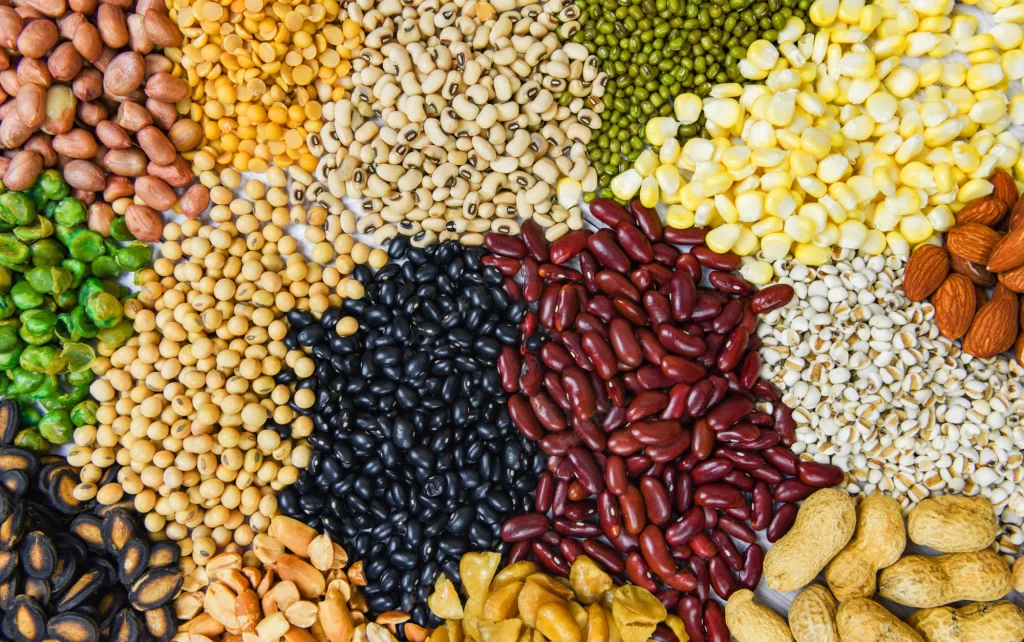
Proteins and amino acids such as lysine can be found in legumes. Beans also contain methionine, an amino acid that helps regulate sulfur levels. In order for bone and cartilage to grow, it is necessary. Amino acids are found in a wide variety of foods, including cooked peas, lentils, and soybeans.
10. Fish

Essential amino acids are present in the bodies of the vast majority of fish. Cold water species are rich in lysine and aspartic acid, marine fishes in leucine, indigenous fish in histidine, and carps and catfish in glutamic acid and glycine, according to an investigation.
All of these fish have high levels of amino acids and can be eaten as part of a healthy diet. Sardines are also an excellent source of essential amino acids and heart-healthy Omega-3 fatty acids.
11. Mushrooms
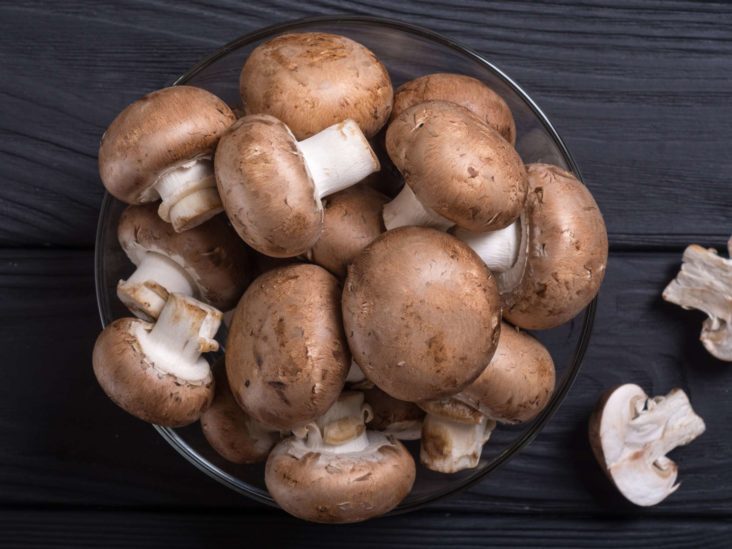
Mushroom has been found to contain nine of the essential amino acids that humans are unable to produce on their own.
Histidine, isoleucine lysine and methionine, phenylalanine, tryptophan, and valine are all amino acids. Pleurotus ostreatus and P. Sajor-Caju oyster mushrooms contain these amino acids.
12. Poultry Products
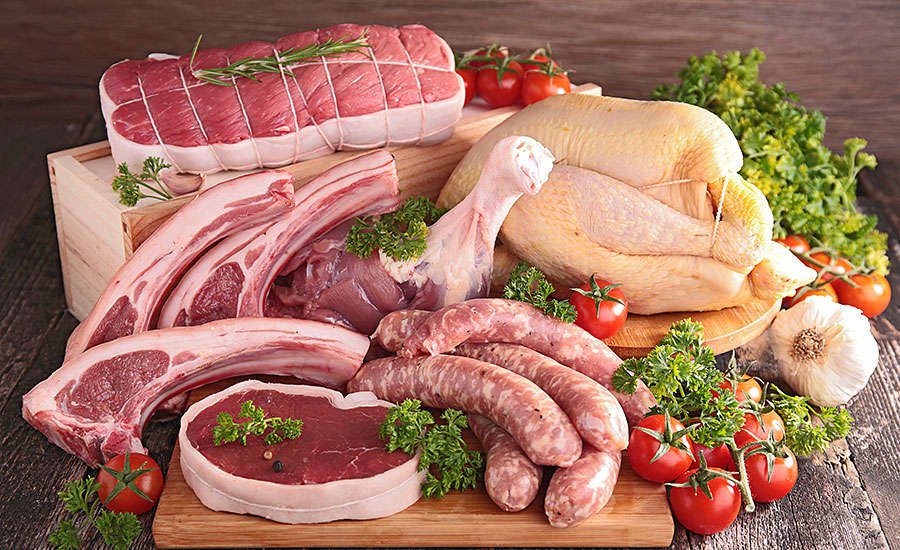
Niacin and selenium are abundant in chicken. It is a vitamin B and amino acid, niacin. A healthy digestive, nervous, and skin are all benefits of eating a well-balanced diet that includes plenty of fiber. With these benefits also comes lower cholesterol levels and a stronger bone structure.
Tryptophan, an amino acid, is abundant in poultry products. Vitamin B cannot be absorbed without it. As an added benefit, it aids in digestion, skin health, and cognitive function.
Serotonin, an antidepressant, is produced in part by tryptophan. It also aids in the control of mood swings. As a result, it has a positive effect on your mental state and helps you relax. The amino acid profile of most meat is very similar.
13. Eggs

In the human body, there are a total of 20 amino acids, and each one serves a specific purpose and function. It is ideal for those who want to build lean muscle and strength, lose fat, or recover faster from training because eggs have a complete amino acid profile. Eggs are a good source of lysine, histidine, leucine, valine, tryptophan, and other amino acids, which are important for a healthy diet. Eggs are also a good source of protein and other essential nutrients, making them a nutritious choice. As a result, they’re a nutritious addition to your morning meal.
14. Quinoa

It has the highest concentration of all the essential amino acids of any food source. Leucine, cysteine, histidine, and tryptophan are among the amino acids found in Quinoa. Isoleucine and leucine are two of the amino acids found in Quinoa. Specific levels of these amino acids are dependent on the conditions under which they are grown. A serving of quinoa, on the other hand, will always contain a substantial amount of both Quinoa’s nutritional profile includes protein, starch, fiber, phosphorus, magnesium, and iron. It’s also free of gluten. It has calming effects and speeds up the healing process of wounds.
15. Cottage Cheese
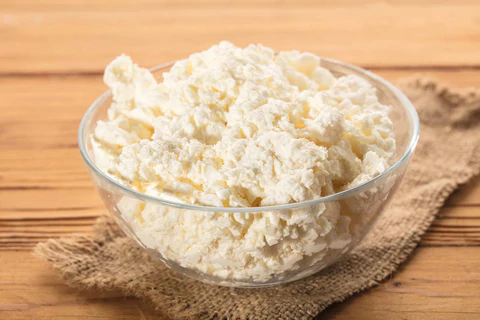
The amino acids threonine and tryptophan are particularly abundant in cottage cheese, which is a high-protein food. 100 grams of cottage cheese contain about 25% of your daily recommended protein intake. In addition, calcium, a mineral that aids in bone health, can be found in abundance in cottage cheese. Sodium in cottage cheese, on the other hand, may counteract the benefits. The key to everything in moderation.
Benefits of High In Amino Acids
Proteins are constructed from amino acids, which are the building blocks of the protein molecule. Every cell in your body relies on it. However, your body may not be able to produce them all. As a result, you need to get it from your diet. Let us know if you need foods high in amino acids.
Supports Brain Function
According to research, the central nervous system (CNS) needs a number of amino acids found in protein foods to function properly. Tryptophan, tyrosine, histidine, and arginine are among the amino acids that the brain uses to synthesize various neurotransmitters and neuromodulators. Tryptophan and tyrosine, for example, boost the production of dopamine and norepinephrine neurotransmitters. Among the hormones that aid in the transmission of nerve signals to cells throughout the body are those known as neurotransmitters. A number of bodily functions, including heart health and diabetes, are regulated by dopamine and norepinephrine. Neurotransmitters glutamate and aspartate are among the best.
Amino Acids Convey Energy
Extra energy is obtained by the muscles during exercise from the amino acids leucine, isoleucine, and valine (LIV). As a result, supplements containing leucine, isoleucine, and valine are common among athletes and sports enthusiasts.
Stops Muscle Wastage and Enhances Muscle Growth
When protein consumption exceeds protein synthesis, muscle loss or breakdown occurs. Researchers believe it is a sign of malnourishment, infections, and fasting. Muscle loss occurs as a result of weight loss. In order to build muscle, you need leucine, an amino acid. It also prevents the breakdown of muscle tissue. As a bonus, it helps to restore muscle damage and soreness. The amino acid valine also aids in muscle growth and recovery.
Stimulates Growth
The body’s ability to grow and function properly depends on amino acids. Growth hormone synthesis is aided by amino acids such as arginine, lysine, and ornithine (GH). Methionine aids in the absorption of selenium and zinc by promoting the synthesis of methylation. Maintaining and promoting overall health is dependent on the presence of these minerals.
Amino Acids Helps in Weight Loss
Proteins and amino acids work together to speed up the breakdown of fat. This could lead to a more significant reduction in body weight. Cysteine is a fat-burning amino acid. Antioxidant protects the body from oxidative stress that leads to weight gain.
Phenylalanine helps you control your hunger pangs. Additionally, amino acids such as glycine, L-tyrosine, and others help you lose weight by reducing your cravings and curbing your hunger.
Prevents Depression
Serotonin production is boosted by taking tryptophan, which prevents sleep disorders. One of the most important antidepressant hormones is called serotonin. As a result, depression is avoided.
Regulates Blood Pressure
Arginine is an amino acid that aids in the regulation of blood flow through the arteries and veins. Angiotensin-converting enzyme (ACE) activity is also increased, which lowers blood pressure. As a result, it aids blood flow by relaxing the blood vessels. Blood pressure is lowered as a result.
Helps Boost Memory
Dopamine is synthesized in part by amino acids like tyrosine and phenylalanine. Norepinephrine improves your memory and concentration by increasing dopamine levels in the brain. Both alertness and relaxation require norepinephrine. The neurotransmitter inhibitory serotonin is critical for a positive mood. It also helps students learn and get a good night’s sleep.
Helps Lower Blood Sugar Levels
Blood sugar levels can be regulated by certain amino acids. Insulin secretion can be stimulated by leucine and isoleucine, for example. The increased absorption of blood glucose by your muscles lowers your blood glucose levels.
Regulates the Immune System
T and B lymphocytes and macrophages, the primary defense cells, are controlled by amino acids. These cells serve as a line of defense against infection. As a bonus, amino acids aid in the production of antibodies that can fight off disease-causing agents. Additionally, Cytokines, a class of hormones involved in immune cell growth and activity, are under their command. Aside from reducing inflammation, amino acids also have a protective effect on the body.
Possible Side Effects and Precautions of Amino Acids
Toxicities are caused by abnormalities in the metabolism of amino acids in the bloodstream. It prevents the breakdown of certain amino acids. The amino acids are also prevented from reaching cells as a result of this. In addition, toxic substances build up in your body as a result of this practice. Abdominal pain, diarrhea, diabetes, and kidney problems can all result from an amino acid overdose. As a result, it is critical to maintaining a healthy balance of amino acids in the body.
Other medications, such as those for diabetes, hypertension, and thyroid disease, may be affected by interactions with amino acid supplements. Amino acids have been shown to reduce blood glucose levels and blood pressure in healthy individuals. So. Amino acid supplements can lower your blood levels even further if you’re already taking medication. Achieving and maintaining an optimal level is therefore critical.
The amino acid lysine helps to keep the blood from clotting. As a result, anticoagulant medications may be adversely affected, increasing the risk of bleeding. Before taking amino acid supplements, it’s best to consult with your doctor.
Frequently Asked Questions (FAQs)
When should I take amino acids?
Maintaining a healthy diet by incorporating amino acids into it is possible. Amino acid supplements, on the other hand, need to be taken according to the label directions. Amino acids are commonly taken by athletes and sportspeople to boost their energy levels and prevent muscle loss during physical exertion.
Do Amino acids burn fat?
This can be true for a subset of amino acids. A good example of this is cysteine, an amino acid that aids in fat metabolism. Oxidative stress, which is linked to obesity, is reduced by the antioxidant properties.
What are the side effects of amino acids?
Toxicities from amino acid metabolism disorders are among the possible side effects of amino acids. Some amino acids may also interact negatively with current medications, resulting in serious consequences. Stool cramps and low blood pressure are two of the most common symptoms. In addition, an abnormal intake of amino acids in food or supplements is the primary cause.
What are the benefits of Amino acids?
There are numerous advantages to taking amino acids. To name a few, it improves digestion, strengthens the immune system, and enhances bone health. Memory is improved, brain functions are controlled, and so on. As a bonus, amino acids can aid in weight loss as well.
Is it safe to take amino acids every day?
Regular consumption of amino acids could be safe. If you eat a healthy, well-balanced diet, you’ll get all of your amino acids from natural sources. However, when taking supplements, make sure to take them only in the prescribed doses.
Do amino acids make you gain weight?
No. The consumption of amino acids does not lead to an increase in body mass. Amino acids, on the other hand, aid in increasing metabolism and ensuring that the body is operating at peak efficiency. Proteins and amino acids work together to increase fat metabolism. As a result, it’s possible that your ability to lose weight will be reduced even further. Amino acid cysteine aids in fat loss.
What causes amino acid deficiency?
Food is the only source of some amino acids that our bodies cannot produce. Dietary deficiencies, indigestion in protein, genetic diseases, etc. are the most common causes of an amino acid deficiency. However, protein deficiency is the most common cause.
Do vegetables have amino acids?
Methionine, valine, threonine, histidine, and tryptophan are some of the amino acids found in most vegetables. They can be found in vegetables such as celery, cauliflower, and mushrooms, which are the best sources.
Are there amino acids in the fruits?
When it comes to leucine, an amino acid that regulates insulin levels, fruits are a great source. A good source of amino acids can be found in fruits such as bananas and apples. Approximately 16 amino acids make up one of the most abundant fruits, the apple.
Should I take amino acids in the morning?
Yes, it’s fine to take it in the early morning. It resembles protein in appearance. However, if you’re taking amino acid supplements, make an appointment with your doctor.
What is amino acid deficiency?
Low levels of specific amino acids are indicative of an amino acid deficiency. Insufficient protein is the primary cause. Unfortunately, it has an effect on all of the amino acid-regulated functions and activities. Cell growth and repair, immunity, and other processes are all impacted.
Do amino acids make you grow?
Yes. Growth hormones are stimulated by a large number of amino acids, and this has a positive effect on overall growth. As a result, children need a diet high in amino acids. Growth hormone production is stimulated by amino acids such as arginine, lysine, and ornithine (GH). Selenium and zinc absorption is aided by methionine. Maintaining and promoting overall health is dependent on the presence of these minerals.
Do Amino Acids Affect Kidneys?
Yes. Amino acids, on the other hand, have a positive impact on the kidneys. Proteolysis and hemodynamics may be regulated by amino acids, according to research. Chronic renal failure is caused by abnormalities in plasma and muscle amino acids. Supplementation, on the other hand, can help to alleviate some of the problems.
What foods contain amino acids?
An amino acid is formed when proteins are broken down into their constituent amino acids. Amino acids are found in all high-protein foods. The best source of amino acids is quinoa, which is a whole grain cereal. Other foods high in amino acids include eggs, turkey, cottage cheese, and mushrooms.
What are the signs of amino acid deficiency?
Muscle loss, fatigue, weakness, reduced healing, and memory loss are all symptoms of an amino acid deficiency. Supplements, on the other hand, can help alleviate some of these symptoms.
Do carrots contain amino acids?
There are no amino acids in carrots. Carrots, on the other hand, have a wide range of health benefits because of their rich nutrient profile. Vitamin C and antioxidants in particular are beneficial to the body because of their high fiber content.
Are apples high in amino acids?
Yes, apples are rich in 16 amino acids, which vary in concentration depending on the region in which they are grown. Pulp has more amino acids than peel, but the amount varies.
Do bananas contain amino acids?
Yes. Amino acids are found in bananas, as are many other fruits. Tryptophan, lysine, arginine, leucine, and other amino acids are found in abundance in these foods.
What nuts are high in amino acids?
There are a number of nuts that are high in amino acids, including cashew nuts, almonds, and peanuts. This nut’s lysine content, for example, aids the body’s calcium regulation, which is critical for bone health.
The Bottom Line
As well as serving as the building blocks for proteins, amino acids also function as metabolic intermediaries. A wide range of biologically significant substances, including nucleotides, peptide hormones, and neurotransmitters, can be synthesized using these molecules as precursors. The building blocks of life are amino acids. All of them, however, are not produced by your body. Because of this, you must eat foods high in amino acids. The key, however, is moderation. Taking in too many amino acids can have negative consequences. As a result, eat these foods in moderation and avoid overdosing. In doing so, you will open the door to a healthier life.



